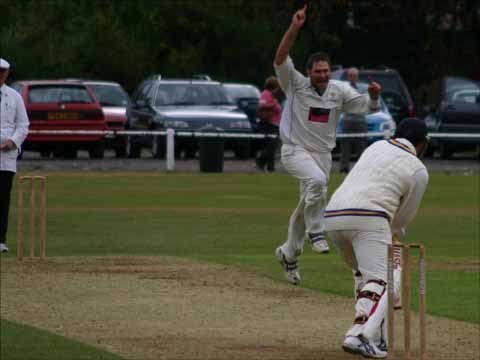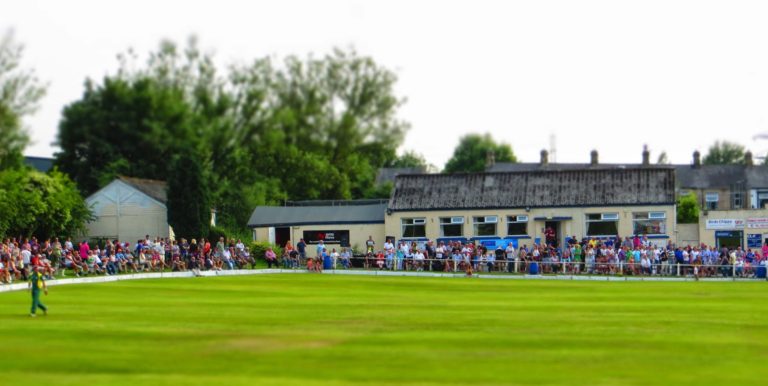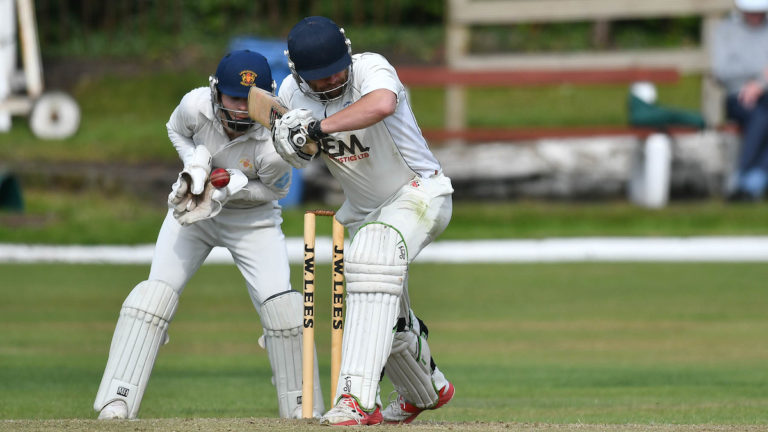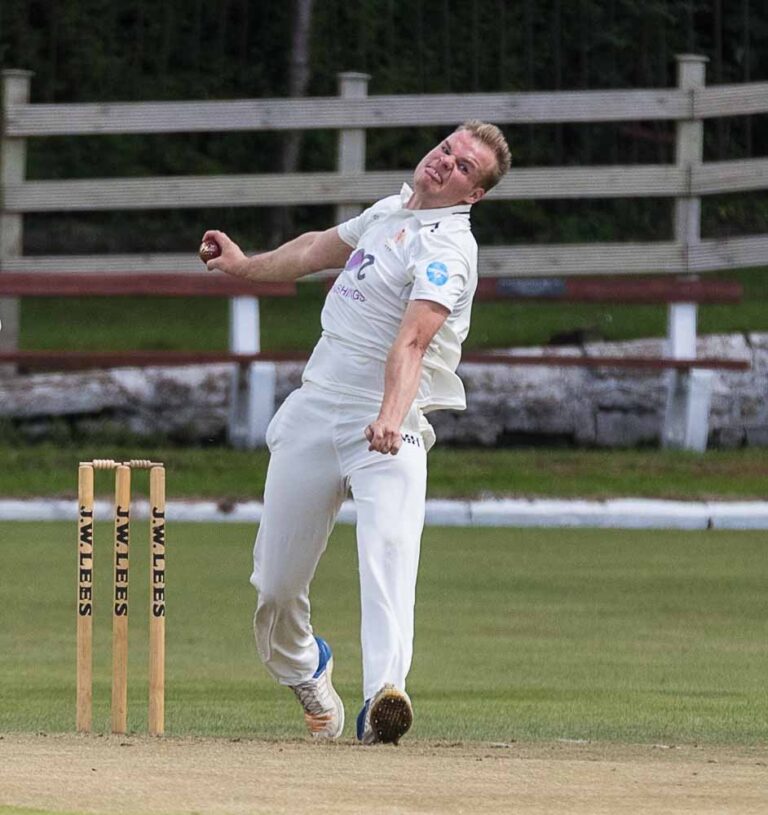1898: The Demon Bowler, and the Unpleasant Incident at Lowerhouse.

Sam Moss (1869-1923)
(Photo posted by a relative on Ancestry, shows Sam Moss when he was on the ground staff at Lancashire).
The Lancashire League minutes of 1898 recorded a protest by the Umpires about the behaviour of the home spectators in the match Lowerhouse v Bacup on 2nd July 1898.
Sam Moss was one of Bacup’s two pros. He was an extremely quick and deadly accurate bowler who was dogged by allegations that his action was “unfair”. Moss was renowned for the ferocity of his deliveries, and his ability to literally smash stumps. Wardle, one of Lowerhouse’s pros., had to retire hurt after being hit by one of his deliveries, “which resulted in rather an unpleasant incident on the ground” according to the press.
Bacup won by 46 runs but Moss had an unusually poor day, taking no wickets, although Lowerhouse did only last 35 overs, of which he bowled a tight 10 overs for 22 runs.
The press reports didn’t explain what the incident was, which so upset the Umpires, but when asked about it by the Lancashire Daily News a few weeks later, Mr. J. Wilkinson, Lowerhouse’s Secretary, said: “The reports of the “row” were greatly exaggerated. The demonstration was not against the team, but against Moss, the fairness of whose delivery some of our spectators questioned. One of our bowlers was no-balled several times in the same match, the Umpire did perfectly right, but it excited the spectators, who, when Moss went on to bowl, shouted “No ball” with all their might. None of our officials observed any stone-throwing.” (Stone throwing?!)
When they also asked Moss about the incident, the Lancashire Daily News said “Sam was just a trifle sore about it, considering the action of the crowd totally uncalled for. He compared this with the attitude of Daff Whittaker, one of Rishton’s pros the previous week when “I had happened to be pretty successful with the ball” (he got 8 for 10 off 7 overs with 3 maidens), who said he couldn’t understand why anyone would take exception to his action as he could see no semblance of a throw, “and the rank and file of the club took their defeat like the sportsmen they are”.
Lowerhouse were given a written warning by the League to control their spectators and Umpires were reminded to enforce the M.C.C. rules re “Unfair bowling”.
In the dreadfully wet summer of 1898, with 10 of Bacup’s games either washed out, or rain affected draws, Moss took 95 wickets, at an average of 6 runs per wicket, taking at least 5 wickets on 13 occasions, including a season’s best of 9 for 60 against Colne. Bacup still ended up second bottom, as their batting didn’t support Sam’s bowling, no prizes for guessing who was bottom. They won the title the following year though, when, in a dry summer, Sam repeated his outstanding figures, the other pro was now a good all rounder, Ernest Needham, and Bacup’s amateur batting generally improved.
Moss spent five full seasons in the Lancashire League, 1896 at Haslingden, then four seasons at Bacup. The League allowed his contract with Haslingden to be mutually cancelled in 1897 after he successfully took them to court for money they owed him, and he moved to Bacup. After four seasons, Bacup let him go at the end of 1900, possibly as the one-pro rule was coming in, but also after alleged dressing room disagreements, and he went to play in Staffordshire. In 1901 the Lancashire League quietly blacklisted him, with all the clubs agreeing not to employ him. His overall record for those five seasons was amazing: 9119 balls, 524 wickets at an average of 7.23, 5 wickets (or more) 73 times, best performance 9 for 26 for Bacup -v- Ramsbottom in 1900, his last, and most successful season, in the Lancashire League. (Stats. courtesy of http://www.lancashireleague.com)
This is not the end of his local connection though, he returned to the area as Padiham’s pro in 1908 and 1909, being instrumental in their winning the championship in 1908, to great rejoicing. Here Lowerhouse’s Helm Spencer says only Roy Gilchrist compared for pace.

Sam was also pro at Read in 1911 and 1913 (Lowerhouse’s Tommy Shutt being pro in 1912). At this time his son Ernest, who also became a good league professional, played some games for Lowerhouse seconds. Sam also had a chip shop at 98 Burnley Road Padiham, with his second wife, Rachel, his first wife having died from pregnancy complications whilst he was playing in Staffordshire. This marked the end of Sam’s time locally.
This is just scratching the surface of Sam Moss’s fascinating life story. In his heyday he was considered the best fast bowler in Lancashire, but although he was briefly on the Old Trafford staff early on, they never called him up again. His career included allegations of throwing, disputes, controversy and desperate personal tragedies. In August 1923, profoundly deaf, he was killed by a train at a level crossing near Featherstone cricket ground, on his way to watch a game.
ac June 2023






